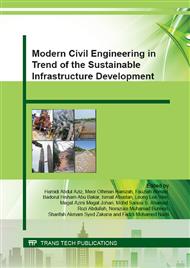p.3
p.10
p.16
p.22
p.28
p.34
p.40
p.45
Rock Overstressing in Deep Tunnel Excavation of Pahang-Selangor Raw Water Transfer Project
Abstract:
Tunneling under high overburden and in-situ stress may cause tunnel instability because of rock overstressing. Evaluating overstressing in deep hard rocks is crucial to minimize excavation risks. The excavation of the Pahang-Selangor Raw Water Transfer Tunnel is evaluated in this study. A potential overstressing problem is expected at a tunnel depth more than 500 m. Therefore, the possibility of rock overstressing is assessed based on the evaluations of in-situ stress measurement, rock strength, and actual observations during the tunnel excavation. An analytical method is used to analyze the behavior of the tunnel under high overburden stress based on rock strength and tangential stress factors. The empirical assessment approach to the observation of actual overstressing appeared to be valid for the prediction of overstressing. These approaches facilitate the reasonable prediction of tunnel behavior under different rock conditions, support systems, and overburden stresses, which serve as useful tools in the observational design and construction method of long and deep tunnels.
Info:
Periodical:
Pages:
16-21
Citation:
Online since:
October 2015
Price:
Сopyright:
© 2015 Trans Tech Publications Ltd. All Rights Reserved
Share:
Citation:


